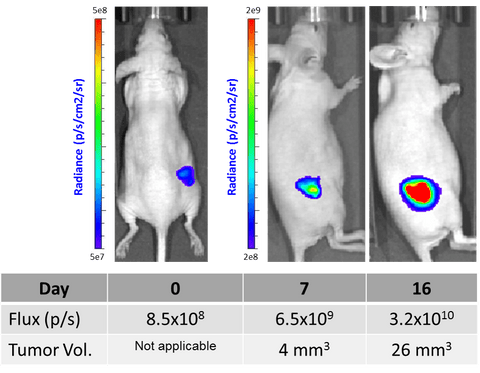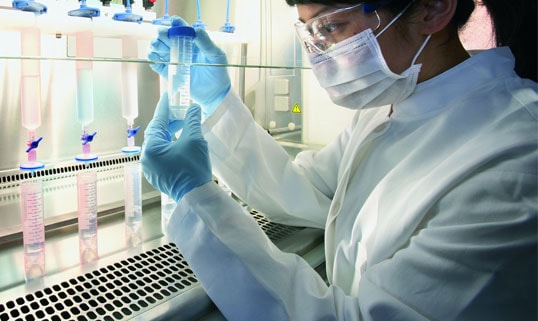HCT116-Fluc-Puro
- Frozen / Standard (CL008-STAN) $ 1,500
Species: Human
Cell type: Colorectal carcinoma
Transgenes: Firefly luciferase (Fluc) with puromycin resistance for selection with puromycin
Media: DMEM, 10% FBS, 1% Pen/Strep, 1 μg/mL puromycin
Description:
HCT116-Fluc-Puro is a polyclonal population of the human colorectal carcinoma cell line HCT116 (ATCC® CCL-247™) transduced with LV-Fluc-P2A-Puro (LV012) encoding firefly luciferase (Fluc) cDNA under the SFFV promoter linked to the puromycin resistance gene (Puro) via a P2A cleavage peptide.
The lentiviral vector used is a self-inactivating (SIN) vector in which the viral enhancer and promoter has been deleted. Transcription inactivation of the LTR in the SIN provirus increases biosafety by preventing mobilization by replication competent viruses and enables regulated expression of the genes from the internal promoters without cis-acting effects of the LTR (Miyoshi et al., J Virol. 1998).
Mycoplasma Testing: This cell line has been tested for mycoplasma contamination and is certified mycoplasma free.
Cell Line Authentication:
Authentication of the parental HCT116 cell line was performed by short tandem repeat (STR) profiling with 9 STR loci including CSF1PO, D13S317, D16S539, D5S818, D7S820, TH01, TPOX, vWA and sex chromosome marker Amelogenin. STR profiling of HCT116 cells are verified and there is no interspecies cross contamination detected.
Recommended uses:
In vitro: This is a high Fluc expressing clone suitable for use as a positive control cell line in bioluminescence assays to validate luciferase expression in your lentiviral transduced cells.
In vivo: This human colorectal cell line grows as xenografts in immunocompromised mice. Growth of these tumors can be monitored noninvasively using bioluminescent imaging with D-luciferin substrate.
Morphology: Low- and high-density cell morphology (200x)

Luciferase Assay: 104, 105, or 106 cells were placed in wells of a 96-well plate and 0.3 mg of d-luciferin was added to the indicated wells. The plate was immediately imaged using a Xenogen IVIS Spectrum.

Bioluminescent images of a subcutaneous HCT116-Fluc-Puro tumor in an athymic mouse


